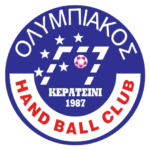Unlike relevant costs, they do not have an impact on the matter at hand. Relevant cost – cost that will differ under alternative courses of action. In other words, these costs refer to those that will affect a decision. Textbook content produced by OpenStax is licensed under a Creative Commons Attribution-NonCommercial-ShareAlike License . The beginning balances and purchases in each of these accounts are illustrated in Figure 4.8. Access and download collection of free Templates to help power your productivity and performance.
Also, salaries of mangers or supervisors might also be included in direct costs, particularly if they’re tied to a specific project. Typically, direct fixed costs don’t vary, meaning they don’t fluctuate with the number of units produced. If the cost object is the production department, the direct and indirect department costs are likely to be partly fixed and partly variable. For example, the production department has it own electric meter to measure the electricity used to operate its equipment.
Often in the production process, there is a correlation between an increase in the amount of direct labor used and an increase in the amount of manufacturing overhead incurred. If the company can demonstrate such a relationship, they then often allocate overhead based on a formula that reflects this relationship, such as the upcoming equation. You are deciding whether to purchase a pizza franchise or open your own restaurant specializing in pizza. List the expenses necessary to sell pizza and identify them as a fixed cost or variable cost; as a manufacturing cost or sales and administrative costs; and as a direct materials, direct labor, or overhead. For each overhead item, state whether it is an indirect material expense, indirect labor expense, or other. For each cost, identify its origination in a job order costing environment.
Especially if you run a smaller, home-based ecommerce business, like an Etsy store, you may avoid many of the costs other ecommerce stores deal with. Over 1.8 million professionals use CFI to learn accounting, financial analysis, modeling and more. Start with a free account to explore 20+ always-free courses and hundreds of finance templates and cheat sheets. For the past 52 years, Harold Averkamp (CPA, MBA) has worked as an accounting supervisor, manager, consultant, university instructor, and innovator in teaching accounting online. For example, in juice direct material may be water, sugar, color, and other ingredients.
Fixed and variable costs for an event (with examples)
Examples of fixed costs are overhead costs such as rent, interest expense, property taxes, and depreciation of fixed assets. Cost structure refers to the various types of expenses a business incurs and is typically composed of fixed and variable costs. Fixed costs are costs that remain unchanged regardless of the amount of output a company produces, while variable costs change with production volume. Job order costing requires the assignment of direct materials, direct labor, and overhead to each production unit.
Some operating expenses can also be classified as direct costs, such as advertising cost for a particular product. Properly allocating overhead to the individual jobs depends on finding a cost driver that provides a fair basis for the allocation. A cost driver is a production factor that causes a company to incur costs.
- The role of a financial analyst is to make sure costs are correctly attributed to the designated cost objects and that appropriate cost allocation bases are chosen.
- Finally, the company multiplies the hourly cost by the number of labor hours spent to manufacture a product to determine the overhead cost for that specific product line.
- Beginning direct material inventory refers to the unused raw material at the start of the month or year.
- For service providers, variable expenses are composed of wages, bonuses, and travel costs.
- Cost allocation is used to distribute costs among different cost objects in order to calculate the profitability of different product lines.
- Even within a company, cost structure may vary between product lines, divisions or business units, due to the distinct types of activities they perform.
In order to run his business company incurred $300,000 cost as rent. It is required in preparing reports for financial statements and stock valuation purposes. The Ascent is a Motley Fool service that rates and reviews essential products for your everyday money matters.
We and our partners process data to provide:
The analysis highlights production inefficiencies, such as abnormal spoilage. Here’s everything you need to know about fixed vs variable costs, with examples from different industries to help make it stick. When an analyst understands the overall cost structure of a company, they can identify feasible cost-reduction methods without affecting the quality of products sold or service provided to customers. The financial analyst should also keep a close eye on the cost trend to ensure stable cash flows and no sudden cost spikes occurring.
It basically includes a fixed cost potion plus additional variable costs. An example would be electricity expense that consists of a fixed amount plus variable effective interest rates charges based on usage. Direct costs – those that can be traced directly to a particular object of costing such as a particular product, department, or branch.
Fixed vs Variable Costs (with Industry Examples)
A company can use various methods to trace employee wages to specific jobs. For example, employees may fill out time tickets that include job numbers and time per job, or workers may scan bar codes of specific jobs when they begin a job task. Please note that in the employee time tickets that are displayed, each employee worked on https://www.online-accounting.net/matrix-organization-the-advantages-and-the/ more than one job. At this stage, the completed products are transferred into the finished goods inventory account. When the product is sold, the costs move from the finished goods inventory into the cost of goods sold. The materials quantity variance compares the actual and expected use of direct materials within a given period.
If the cost object is a product being manufactured, it is likely that direct materials are a variable cost. (If one pound of material is used for each unit, then this direct cost is variable.) However, the product’s indirect manufacturing costs are likely a combination of fixed costs and variable costs. For instance, if the managers within the manufacturing facility but not on the assembly line are paid salaries which total $20,000 per month, this cost is a fixed indirect product cost. The equipment maintenance expense and the temporary shipping clerks could be a variable indirect product cost, since this cost will vary with production volume.
Let’s say that XYZ Company manufactures automobiles and it costs the company $250 to make one steering wheel. In order to run its business, the company incurs $550,000 in rental fees for its factory space. In the second illustration, costs are fixed and do not change with the number of units produced. Upgrading to a paid membership gives you access to our extensive collection of plug-and-play Templates designed to power your performance—as well as CFI’s full course catalog and accredited Certification Programs. Then, subtract the value of raw materials at the end of the year on 31st December 2021 (i.e., closing stock) from the total raw materials available. Standard cost – predetermined cost based on some reasonable basis such as past experiences, budgeted amounts, industry standards, etc.














